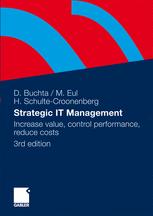

Most ebook files are in PDF format, so you can easily read them using various software such as Foxit Reader or directly on the Google Chrome browser.
Some ebook files are released by publishers in other formats such as .awz, .mobi, .epub, .fb2, etc. You may need to install specific software to read these formats on mobile/PC, such as Calibre.
Please read the tutorial at this link: https://ebookbell.com/faq
We offer FREE conversion to the popular formats you request; however, this may take some time. Therefore, right after payment, please email us, and we will try to provide the service as quickly as possible.
For some exceptional file formats or broken links (if any), please refrain from opening any disputes. Instead, email us first, and we will try to assist within a maximum of 6 hours.
EbookBell Team

4.8
104 reviewsThe Value of IT – New Perspectives for Utilizing IT What value does IT provide for the company? This has been the key question for IT man- ers and decision-makers at board level since technologization began. From the introduction of the first automated data processing systems to integrating value chains across enterprises, the potential of IT to generate benefit and, in the final analysis, generate value for companies has grown in leaps and bounds. In the 1970s, the value of an IT investment for automating individual operations consisted of faster and cheaper handling of paper-based activities, and therefore, for example, shorter time-to-invoice and collection cycles for faster inpayments. In the 1980s, the triumphal march of the PC and the first integrated applications not only reduced business process costs, but also accelerated and optimized entire business process chains. For example, in the mid- 1980s, systems such as SAP R/2 were already offering integrated processes for everything from procurement, inventory management and distribution to accounting and controlling. Processes ran more smoothly, interfaces were optimized or eliminated, in short: huge pot- tial for reducing business process spending was created. In the 1990s, Enterprise Resource Planning (ERP), Customer Relationship Management (CRM) and Supply Chain Management (SCM) then made it possible to integrate business processes across the value chain.